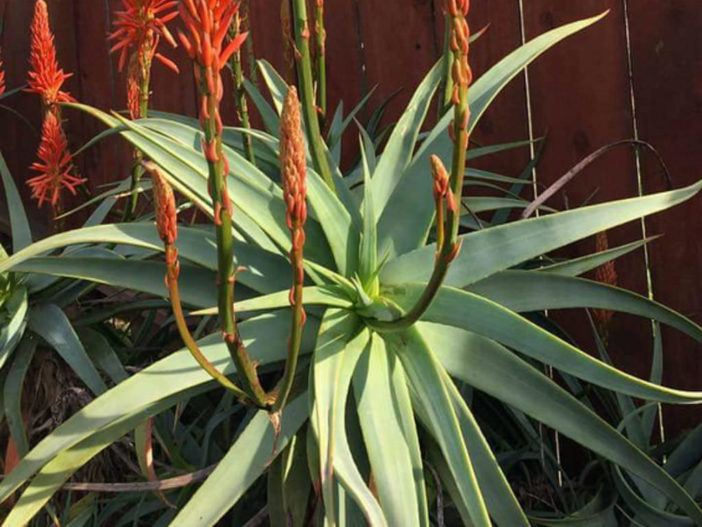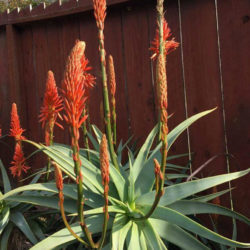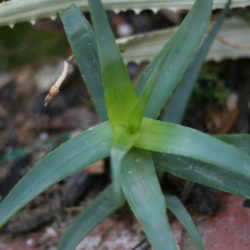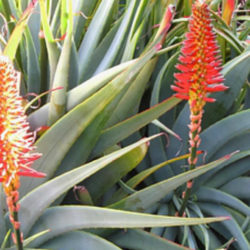Scientific Name
Aloe arborescens 'Spineless'
Common Name(s)
Toothless Torch Aloe
Scientific Classification
Family: Asphodelaceae
Subfamily: Asphodeloideae
Genus: Aloe
Description
Aloe arborescens 'Spineless' is a much-branched succulent shrub with branches holding rosettes of narrow, recurved, nearly toothless leaves. It can grow up to 5 feet (1.5 cm) tall and wide. The branches are up to 12 inches (30 cm) in diameter, branched and rebranched from the base or higher, and have old dried leaves persistent below the terminal rosette. The rosettes can reach up to 18 inches (45 cm) in diameter. The leaves are dull yellow-green, blushing an orange-pink when stressed.
The coral-red flowers hang tightly on erect, simple or few-branched inflorescences that rise to 2 feet (60 cm) above the foliage in winter.
Origin
Aloe arborescens 'Spineless' is a toothless cultivar of Aloe arborescens.

Hardiness
USDA hardiness zones 9a to 11b: from 20 °F (−6.7 °C) to 50 °F (+10 °C).
How to Grow and Care
Torch Aloe is an easy and rewarding plant to grow and is a popular garden plant in many countries. It enjoys full sun, well-drained, compost-enriched soil, and can tolerate moderate frost but is sensitive to severe frost. It is fast-growing, and it will tolerate drought and neglect once established. It is grown mainly as an ornamental or accent plant but is also an excellent and impenetrable hedge plant.
During the active growth period, water plentifully as necessary to keep the potting soil thoroughly moist. During dormancy, water the plants only enough to prevent the soil from completely drying out. Apply a standard liquid fertilizer every two weeks during the active growth period.
It grows well in normal room temperatures and is tolerant of dry air. However, to encourage flowering, giving the plants a short winter rest at no more than 50 °F (10 °C) is best.
Learn more at How to Grow and Care for Aloe.
Links
- Back to genus Aloe
- Succupedia: Browse succulents by Scientific Name, Common Name, Genus, Family, USDA Hardiness Zone, Origin, or cacti by Genus
Photo Gallery
Click on a photo to see a larger version.


